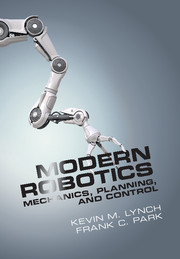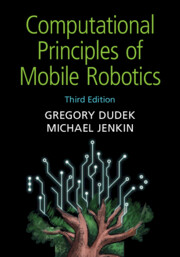Refine search
Actions for selected content:
1206 results in Computer Graphics, Image Processing and Robotics
18 - Review of Matrices*
-
- Book:
- Signals, Systems, and Signal Processing
- Published online:
- 29 August 2024
- Print publication:
- 13 June 2024, pp 671-684
-
- Chapter
- Export citation
Contents
-
- Book:
- Signals, Systems, and Signal Processing
- Published online:
- 29 August 2024
- Print publication:
- 13 June 2024, pp vii-xviii
-
- Chapter
- Export citation
Copyright page
-
- Book:
- Signals, Systems, and Signal Processing
- Published online:
- 29 August 2024
- Print publication:
- 13 June 2024, pp iv-iv
-
- Chapter
- Export citation
References
-
- Book:
- Signals, Systems, and Signal Processing
- Published online:
- 29 August 2024
- Print publication:
- 13 June 2024, pp 685-691
-
- Chapter
- Export citation
11 - The Fourier Series
-
- Book:
- Signals, Systems, and Signal Processing
- Published online:
- 29 August 2024
- Print publication:
- 13 June 2024, pp 458-507
-
- Chapter
- Export citation
Summaries and Tables
-
- Book:
- Signals, Systems, and Signal Processing
- Published online:
- 29 August 2024
- Print publication:
- 13 June 2024, pp xxvii-xxviii
-
- Chapter
- Export citation
3 - Linear Time-Invariant Systems
-
- Book:
- Signals, Systems, and Signal Processing
- Published online:
- 29 August 2024
- Print publication:
- 13 June 2024, pp 62-116
-
- Chapter
- Export citation
15 - More on Bandlimited Signals*
-
- Book:
- Signals, Systems, and Signal Processing
- Published online:
- 29 August 2024
- Print publication:
- 13 June 2024, pp 601-625
-
- Chapter
- Export citation
11 - The Fourier Series
-
- Book:
- Signals, Systems, and Signal Processing
- Published online:
- 29 August 2024
- Print publication:
- 13 June 2024, pp 458-507
-
- Chapter
- Export citation
12 - The DFT and the FFT
-
- Book:
- Signals, Systems, and Signal Processing
- Published online:
- 29 August 2024
- Print publication:
- 13 June 2024, pp 508-555
-
- Chapter
- Export citation

Modern Robotics
- Mechanics, Planning, and Control
-
- Published online:
- 04 June 2024
- Print publication:
- 25 May 2017

Computational Principles of Mobile Robotics
-
- Published online:
- 19 March 2024
- Print publication:
- 08 February 2024
-
- Textbook
- Export citation
13 - Robot Ethics
- from Part three - Advanced Topics and the Future of Mobile Robotics
-
- Book:
- Computational Principles of Mobile Robotics
- Published online:
- 19 March 2024
- Print publication:
- 08 February 2024, pp 333-341
-
- Chapter
- Export citation
Acknowledgments
-
- Book:
- Computational Principles of Mobile Robotics
- Published online:
- 19 March 2024
- Print publication:
- 08 February 2024, pp xvii-xviii
-
- Chapter
- Export citation
Bibliography
-
- Book:
- Computational Principles of Mobile Robotics
- Published online:
- 19 March 2024
- Print publication:
- 08 February 2024, pp 387-420
-
- Chapter
- Export citation
4 - Non-Visual Sensors and Algorithms
- from Part one - Locomotion and Perception
-
- Book:
- Computational Principles of Mobile Robotics
- Published online:
- 19 March 2024
- Print publication:
- 08 February 2024, pp 82-119
-
- Chapter
- Export citation
8 - System Control
- from Part two - Representation and Planning
-
- Book:
- Computational Principles of Mobile Robotics
- Published online:
- 19 March 2024
- Print publication:
- 08 February 2024, pp 229-251
-
- Chapter
- Export citation
Appendix B - Probability and Statistics
-
- Book:
- Computational Principles of Mobile Robotics
- Published online:
- 19 March 2024
- Print publication:
- 08 February 2024, pp 370-375
-
- Chapter
- Export citation
1 - Overview and Motivation
-
- Book:
- Computational Principles of Mobile Robotics
- Published online:
- 19 March 2024
- Print publication:
- 08 February 2024, pp 1-15
-
- Chapter
- Export citation
3 - Mobile Robot Hardware
- from Part one - Locomotion and Perception
-
- Book:
- Computational Principles of Mobile Robotics
- Published online:
- 19 March 2024
- Print publication:
- 08 February 2024, pp 31-81
-
- Chapter
- Export citation
